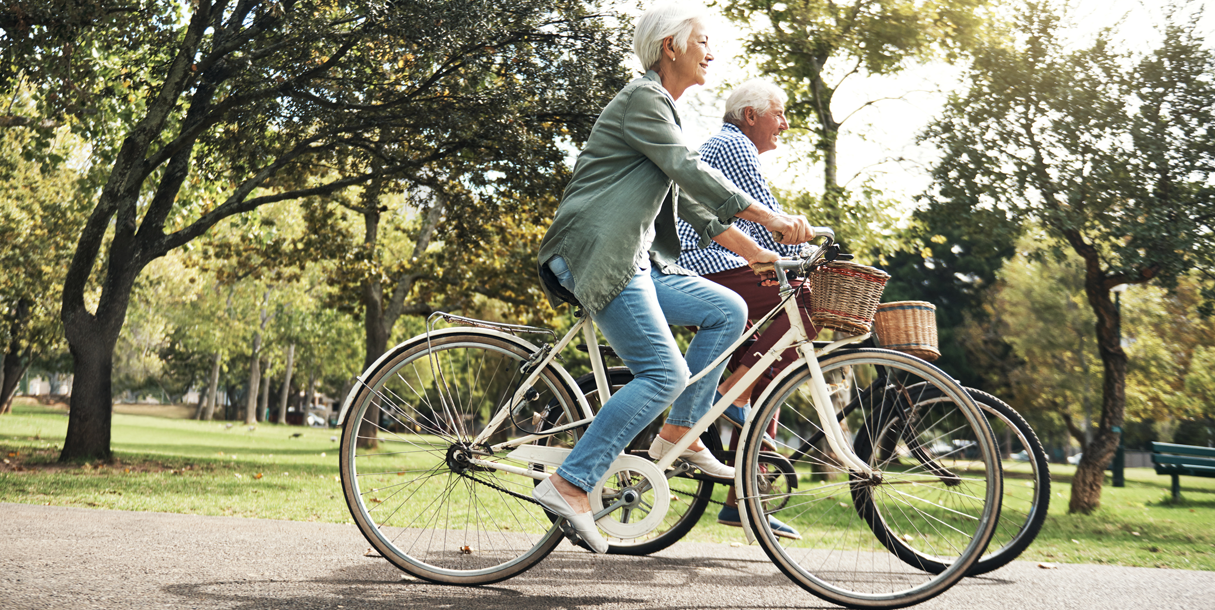Whether you’re a senior or not, surely you know one. And now, you’ll know why it is so important that especially as you age, you KEEP MOVING! Mercy Health Orthopedic Surgeon James D. Abbott is here with steps you can take toward senior fitness to live a long and healthy lifestyle.
Tips for Senior Fitness and Health
Mercy Health Orthopedic Surgeon James D. Abbott helps patients in their golden years maintain their independence and get back to their active lifestyles through joint replacement surgeries and fracture repairs. We asked Dr. Abbott to share some simple tips and exercises that seniors could incorporate into their routine to help maintain bone density and muscle strength while also improving balance and cardiovascular health.
Aerobic Training
Walking
Try starting small with a 3-5-minute walk 3 times per week. Add 2-3 minutes per week until you can walk at least 30 minutes at a time. Weight bearing exercises, like walking, play a key role in maintaining bone density, muscle strength, and balance in addition to the cardiovascular benefits you get from aerobic exercises like walking.
Swimming
If normal walking is too painful for your hips or knees, visit a pool! Walking in a pool or swimming can reduce the impact on the joints, while still providing cardiovascular benefits.
Riding a Bike
Bike riding maintains strength, balance, and cardiovascular health. But be sure to ride in a safe environment; some people choose to ride a stationary bike or take a spinning class, others prefer the road. Please remember: if you ride outside, always wear a helmet!
Resistance Training
Adding some resistance training to your routine will help with balance and maintaining muscle mass. You will need a set of rubber tubes (found at most sporting goods stores) to help in these exercises. For your ARMS, try bicep curls, triceps extensions and forward and side arm raises to shoulder level. For your LEGS, try squats and lunges if your balance is good. If you have trouble with full squats, you can start with wall sits.
Balance Training
Studies show that your ability to balance on one foot is linked to lowered risk of falls and higher life expectancy*. Begin by simply standing on one foot near a counter or another object you can hold on to if you need help. Once you feel you have your balance, let go of the counter. You will likely start by looking at your foot as you balance, but as you get better, try looking forward instead. Once you can balance for 20-30-seconds on each foot while looking forward, you can try doing the exercise with your eyes closed. Remember: this is a safety first exercise; always have a sturdy counter or piece of furniture that weighs more than you to help balance you if needed. And don’t forget to open your eyes (if you closed them) to put the other foot on the ground if you start to lose your balance.
If you have any concerns or questions about starting an exercise program or have any issues incorporating these exercises into your lifestyle due to joint pain, don’t hesitate to reach out to one of our orthopedic physicians or physical therapists. Visit mercy.com/ortho to find an expert near you.
*Journal of Aging Research 5/13/2011 by Kalis ch, T, et. al. Rapid assessment of age-related difference in standing balance.






